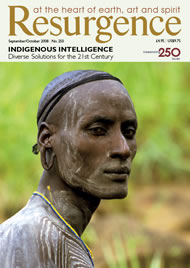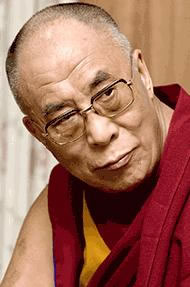IN ATTEMPTING TO describe ‘the global journey’ of Tenzin Gyatso, the fourteenth Dalai Lama of Tibet, Pico Iyer takes on a formidable challenge. Not only does his subject inhabit a mind-boggling multiplicity of roles – monk, philosopher, politician, teacher, science enthusiast, hopegiver to millions – but he is also extraordinarily popular and widely written about. Which means his global journey has already been documented, by various writers and from different viewpoints, including his own.
Anyone who has read some of the numerous books written by and about the Dalai Lama, attended his public teachings and lectures, or followed his interviews in the international media, will have a fair idea of his message and the dilemmas he faces. In that, The Open Road adds little to the pool of knowledge already available in the public realm about the Dalai Lama, Tibetan Buddhism, and the issue of Tibet.
Where Iyer’s book stands out is in his keen journalistic eye, which discerns patterns and connections that may not be apparent otherwise. This makes for a multilayered exploration of the Dalai Lama – perhaps the only way to credibly describe him, given the ‘manyness’ of his persona and presence. In the three parts of the book – ‘In Public’, ‘In Private’, ‘In Practice’ – Iyer introduces us to the monk who meditates four hours every morning, the philosopher extensively trained in his lineage of Tibet’s Vajrayana Buddhism, the icon and global celebrity, and the politician criticised by dissidents among his own people for the very thing that has led to his worldwide popularity – the quest for a peaceful resolution to China’s repression of Tibet.
As Iyer follows the Dalai Lama from Dharamsala, his home in exile in India, to Japan, to Canada, to California, he keeps his lens wide enough to take in the range of possibilities and activities, hope and faith, worldliness and spirituality that arise around this one human being. The picture that emerges is more a tapestry than a photograph: a painstaking weave of diverse strands that colour and texture an understanding of a man who is, really, a pilgrim on the open road that is the path of truth-seeking.
Because of his father’s friendship with the Dalai Lama, Iyer has a unique vantage point from which to make his observations, and enviable access to the Dalai Lama. I do feel that he doesn’t quite use this access as much as he could have, in presenting fresh insights into the Dalai Lama’s mind. And though Iyer does bring in the Buddhist ideals that have shaped the Dalai Lama’s worldview, there is always a sense of distance, as if one were looking into a curiosity shop, fascinated by what one saw but unable to actually touch what’s within. One is never drawn into the Dalai Lama’s journey – he remains remote, even as Iyer attempts to analyse his perspectives and life choices.
The Dalai Lama is remarkable because he is a practitioner of ideals, and not just a scholar who knows the scriptures without living their essence. We are moved when he talks about compassion, for instance, because he practises it himself, in full public view, in the most difficult of circumstances, towards those who have destroyed his land and its culture and forced him to live most of his life as a refugee.
In The Open Road, this intensely human journey towards a wise, open state of being never really comes alive. In this sense, the book seems to skim the surface despite the author’s personal proximity to the Dalai Lama. It is a valuable opportunity not quite taken advantage of, of taking the Dalai Lama off his pedestal of ‘specialness’ and presenting his inner journey as a human one that can be emulated in creative ways, in our own contexts, if only we make the effort.
The Open Road delights with the quality of Iyer’s writing – it is strewn with sparkling reflections and observations from his experiences on the trail of the Dalai Lama. He meets interesting people, listens in on conversations, peeps into computers at internet cafes, and generally keeps an eye out for the unusual as well as the typical. This book is in some respects about the global journey of Iyer as well as that of the Dalai Lama. Whether this enriches the reading experience, or leaves one feeling a bit cheated given the emphasis on the Dalai Lama in the title and cover, is, I suppose, a matter that must be left to the individual reader. •







